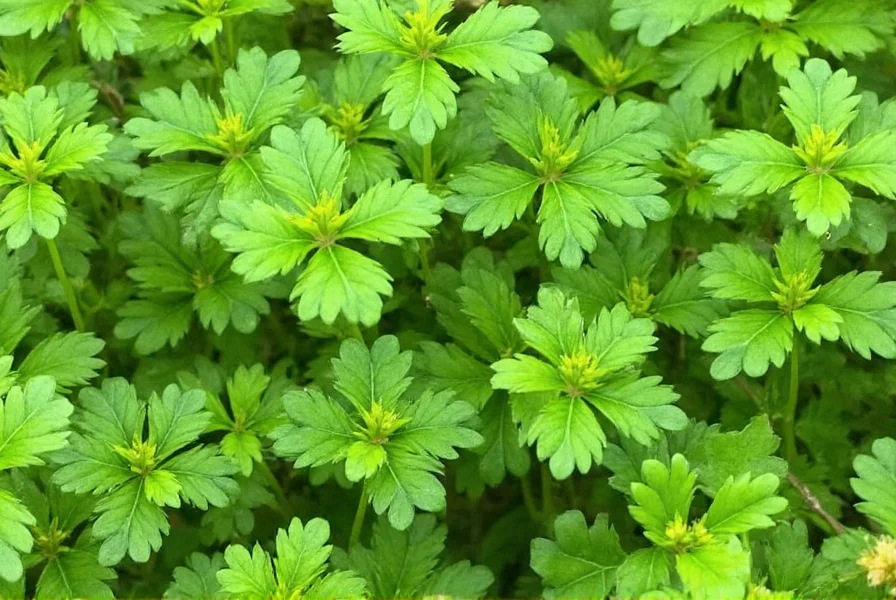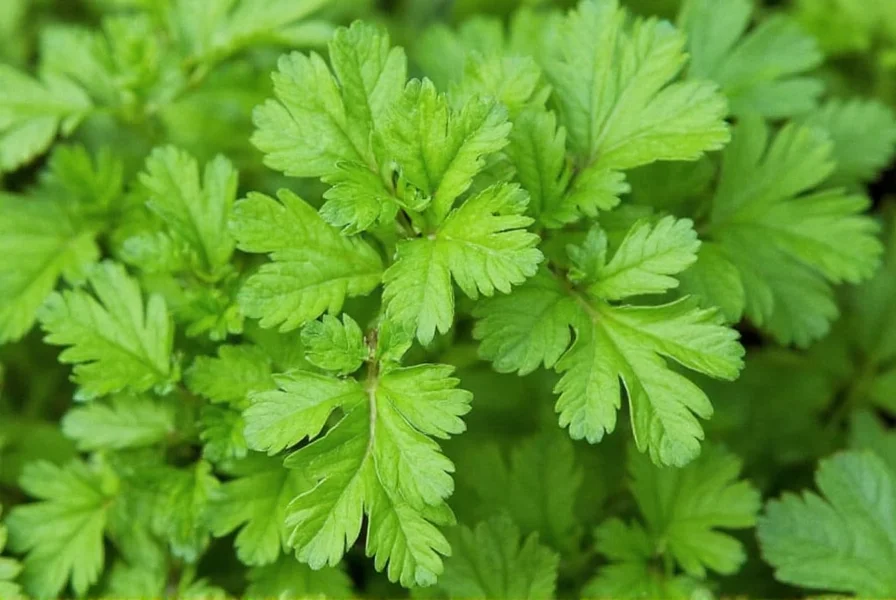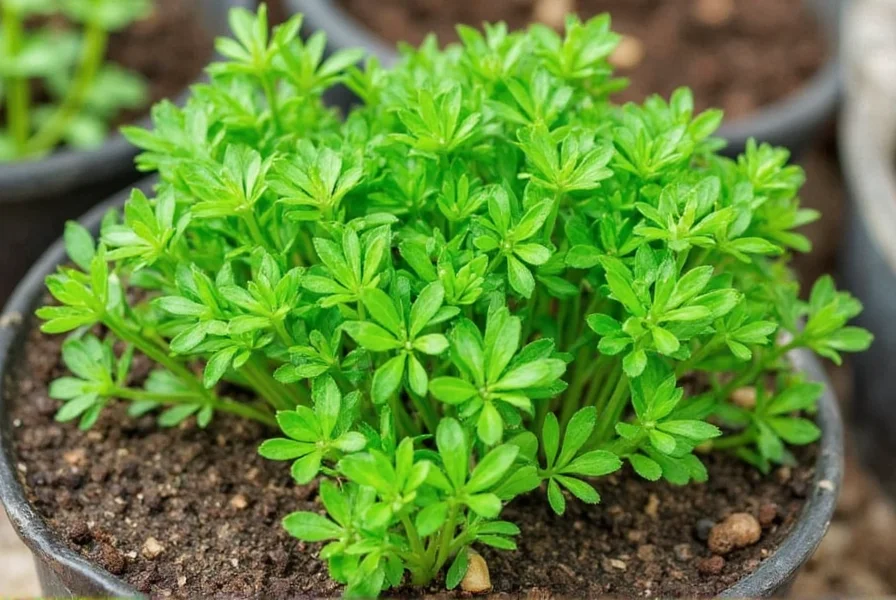Coriander (Coriandrum sativum), known as cilantro in its leafy stage, is a versatile herb prized for both its fresh leaves and aromatic seeds. Growing this annual herb successfully requires understanding its unique growth patterns and environmental preferences. Unlike many herbs, coriander has a taproot system that dislikes transplanting, making direct sowing essential for optimal growth. This comprehensive guide provides science-backed techniques for cultivating thriving coriander plants whether in garden beds or containers.
Understanding Coriander's Growth Cycle
Coriander completes its life cycle quickly, typically bolting (going to seed) within 45-70 days when temperatures exceed 75°F (24°C). The plant progresses through three distinct stages:
- Leaf stage (first 3-4 weeks): Produces the cilantro leaves used in cooking
- Flowering stage (weeks 5-6): Develops white flowers that attract beneficial insects
- Seed stage (weeks 7-8): Forms the coriander seeds used as spice
Successful cultivation requires working with this natural progression rather than against it. Many gardeners fail by expecting continuous leaf production without understanding coriander's biological imperative to complete its life cycle.
| Growth Stage | Duration | Temperature Range | Key Care Requirements |
|---|---|---|---|
| Germination | 7-10 days | 55-70°F (13-21°C) | Keep soil consistently moist |
| Vegetative | 3-4 weeks | 60-75°F (16-24°C) | Regular harvesting, moderate water |
| Reproductive | 2-3 weeks | 70-85°F (21-29°C) | Reduce watering, allow seed maturation |
Optimal Planting Conditions for Coriander
Coriander thrives in specific environmental conditions that mimic its native Mediterranean climate. The key factors determining successful growth include:
Climate and Timing
Plant coriander during cool seasons—early spring or fall—when daytime temperatures stay between 50-85°F (10-29°C). In most climates, this means planting 2-4 weeks before your last spring frost date or 8-10 weeks before your first fall frost. Coriander bolts quickly when exposed to temperatures above 85°F (29°C) or extended daylight hours, making summer cultivation challenging without special techniques.
Soil Requirements
Prepare soil with these characteristics for optimal coriander growth:
- pH level: 6.2-6.8 (slightly acidic to neutral)
- Texture: Well-draining loam with 2-3 inches of compost worked in
- Depth: Minimum 8 inches to accommodate taproot development
- Nutrients: Moderate fertility (avoid high-nitrogen fertilizers that promote leafy growth at the expense of root development)
For growing coriander in containers, use a pot at least 8 inches deep with drainage holes. A mix of 60% potting soil and 40% perlite provides ideal drainage while retaining sufficient moisture.
Sunlight Needs
Coriander prefers 4-6 hours of morning sun with afternoon shade in warmer climates. In cooler northern regions, it can tolerate up to 8 hours of direct sunlight. The key is protecting plants from intense midday and afternoon sun, which accelerates bolting. When growing coriander indoors, provide 6-8 hours of bright, indirect light or use grow lights positioned 6-12 inches above plants for 12-14 hours daily.
Step-by-Step Planting Guide
Follow these steps for successful coriander cultivation:
- Seed preparation: Soak seeds overnight in room-temperature water to improve germination rates (skip this step in humid climates)
- Planting depth: Sow seeds 1/4 inch deep—deeper planting inhibits germination
- Spacing: Place seeds 2-4 inches apart in rows 12 inches apart
- Covering: Lightly cover with soil and water gently
- Moisture management: Keep soil consistently moist but not waterlogged during germination
For continuous harvest, practice succession planting every 2-3 weeks throughout the cool season. This technique ensures a steady supply of fresh leaves as older plants bolt. When learning how to grow coriander from seeds, remember that coriander dislikes root disturbance, so avoid transplanting seedlings whenever possible.

Essential Care Practices
Proper care extends your coriander harvest and delays bolting:
Watering Requirements
Coriander needs consistent moisture but dislikes soggy conditions. Water when the top inch of soil feels dry, providing about 1 inch of water weekly. During hot spells, increase frequency but avoid overhead watering to prevent fungal diseases. Container-grown plants typically require watering every 2-3 days as pots dry out faster than garden soil.
Fertilizing Strategy
Coriander generally doesn't require heavy feeding. If growing in poor soil, apply a balanced organic fertilizer (5-5-5) at half-strength when plants reach 3 inches tall. Over-fertilizing, especially with nitrogen, promotes excessive leaf growth that's more susceptible to pests and disease. For container plants, use a diluted liquid fertilizer every 3-4 weeks.
Pruning and Harvesting Techniques
Harvest coriander leaves when plants reach 6 inches tall, taking no more than one-third of the plant at a time. Cut outer leaves first, allowing inner growth to continue. For when to harvest coriander leaves, morning is ideal when essential oils are most concentrated. Regular harvesting actually delays bolting by encouraging vegetative growth.
To harvest coriander seeds, allow flowers to develop into small green balls that turn beige as they mature. Cut seed heads when 50-75% have turned brown, then dry them in a paper bag for 1-2 weeks.
Troubleshooting Common Problems
Understanding these common issues helps maintain healthy coriander plants:
Why Does My Coriander Keep Dying?
Several factors cause coriander failure:
- Overwatering: Yellowing leaves and mushy stems indicate root rot
- Underwatering: Wilting and dry, brittle leaves
- Bolting: Sudden flowering due to heat stress or maturity
- Pests: Aphids and spider mites thrive on stressed plants
When why does my coriander keep dying becomes a recurring issue, check your watering practices first, then examine environmental conditions.
Preventing Bolting
Coriander's tendency to bolt prematurely frustrates many gardeners. Combat this by:
- Planting in partial shade during warmer months
- Maintaining consistent soil moisture (fluctuations trigger bolting)
- Choosing slow-bolt varieties like 'Santo' or 'Costa Rican'
- Using mulch to keep soil temperatures cooler
- Practicing regular harvesting to delay flowering

Container Growing Success
Growing coriander in containers offers advantages for small-space gardeners and those in challenging climates:
- Use pots at least 8 inches deep to accommodate taproots
- Choose containers with excellent drainage (terracotta works well)
- Mix potting soil with 30% perlite for optimal drainage
- Place containers where they receive morning sun and afternoon shade
- Monitor moisture closely as containers dry faster than garden beds
Container growing allows you to move plants to optimal conditions as seasons change, extending your harvest window significantly. When growing multiple containers, space them at least 6 inches apart to ensure adequate air circulation.
Harvesting and Preservation
Maximize your coriander yield with these harvesting techniques:
- Begin harvesting when plants reach 6 inches tall
- Cut outer stems 1-2 inches above soil line to encourage new growth
- Harvest in the morning for peak flavor and essential oil content
- For continuous leaf production, never remove more than one-third of the plant at once
Preserve excess harvest by:
- Refrigerating stems in water (like cut flowers) for 1-2 weeks
- Freezing leaves in ice cube trays with water or oil
- Drying leaves for longer-term storage (though flavor diminishes)
- Storing in airtight containers away from light and heat
Understanding when to harvest coriander leaves ensures peak flavor. The best time is just before flowering when essential oil concentration is highest. Once flowering begins, leaf flavor diminishes rapidly.
Conclusion
Successful coriander cultivation hinges on working with the plant's natural tendencies rather than against them. By planting at the right time, providing appropriate soil conditions, maintaining consistent moisture, and harvesting correctly, you can enjoy fresh coriander throughout the cool seasons. Remember that succession planting every 2-3 weeks provides the most reliable harvest, while container growing offers flexibility in challenging climates. With these techniques, you'll overcome common challenges like premature bolting and enjoy a bountiful supply of this versatile herb.
Frequently Asked Questions
How long does it take for coriander to grow from seed?
Coriander seeds typically germinate in 7-10 days under optimal conditions (soil temperature 55-70°F/13-21°C). Plants reach harvestable size (6 inches tall) in 3-4 weeks. The complete growth cycle from seed to seed maturity takes 6-8 weeks, though this varies based on temperature and growing conditions.
Why is my coriander plant turning yellow?
Yellowing coriander leaves usually indicate overwatering or poor drainage. Check soil moisture—coriander prefers consistently moist but not soggy conditions. Nutrient deficiencies (particularly nitrogen) or fungal diseases can also cause yellowing. Ensure proper air circulation and avoid watering the leaves directly to prevent fungal issues.
Can I grow coriander indoors year-round?
Yes, you can successfully grow coriander indoors year-round with proper conditions. Use a south-facing window or grow lights providing 12-14 hours of light daily. Maintain temperatures between 60-75°F (16-24°C) and keep soil consistently moist. Choose slow-bolt varieties and practice regular harvesting to extend the leaf production phase. Container size should be at least 8 inches deep to accommodate the taproot.
How do I prevent coriander from bolting too quickly?
To delay bolting: plant in partial shade during warm months, maintain consistent soil moisture (avoid fluctuations), choose slow-bolt varieties like 'Santo', use mulch to keep soil cool, and harvest regularly. Succession planting every 2-3 weeks ensures a continuous supply as older plants inevitably bolt. Temperatures above 75°F (24°C) significantly accelerate the bolting process.
Can I grow coriander from store-bought seeds?
Yes, you can grow coriander from store-bought coriander seeds (which are actually the dried fruit of the plant). Simply soak the seeds overnight, then plant 1/4 inch deep in well-draining soil. Note that some commercially sold seeds may be treated or roasted, which prevents germination—use untreated, raw coriander seeds from the spice aisle or purchase seeds specifically labeled for planting.











 浙公网安备
33010002000092号
浙公网安备
33010002000092号 浙B2-20120091-4
浙B2-20120091-4